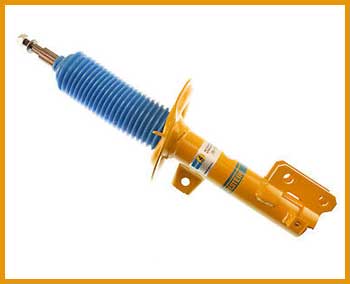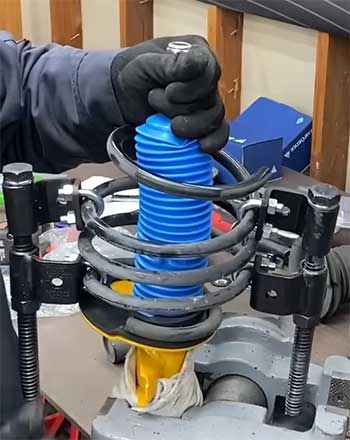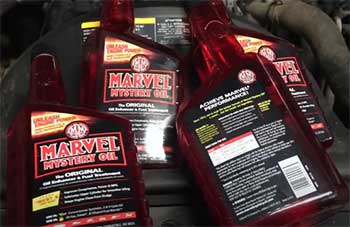I’m no stranger to tinkering with my car’s suspension, chasing that perfect balance of comfort and performance. When it came to upgrading my shocks, I found myself torn between the Bilstein B6 and B8 coilovers.
Both are renowned for their quality, but which one suits my driving style—and yours? In this article, I’ll share my hands-on experience, breaking down the pros and cons, key features, and real-world performance of these two legends.
With a conversational lens and an analytical edge, let’s explore what makes the B6 and B8 tick and help you decide.
A Brief Comparison Table
| Feature | Bilstein B6 | Bilstein B8 |
| Design Purpose | Performance upgrade for stock height | Optimized for lowered vehicles |
| Ride Height | Maintains factory ride height | Shortened for lowering springs |
| Spring Compatibility | Works with OE or Bilstein B3 springs | Designed for lowering or OE sport springs |
| Damping Characteristics | Firm, sporty, but balanced for daily use | Firmer, track-focused, precise handling |
| Best For | Daily drivers, spirited road driving | Track enthusiasts, lowered setups |
| Price Range | Moderate, slightly cheaper than B8 | Higher due to specialized design |
| Ride Comfort | Comfortable with sporty edge | Stiffer, less forgiving on rough roads |
| Applications | Stock or mildly modified vehicles | Performance cars, motorsport setups |
This table sums up the core differences, but the real story lies in how these shocks feel on the road. Let’s break it down.
Why I Chose To Compare Bilstein B6 And B8?
My car, a 2018 BMW 3 Series, was begging for a suspension upgrade. The stock shocks were fine for cruising, but I craved sharper handling without turning my daily commute into a bone-rattling ordeal.
Bilstein’s reputation for quality made the B6 and B8 natural contenders, but their differences weren’t immediately clear. I wanted a setup that could handle twisty backroads while still being livable for grocery runs.
After hours of research, test drives, and chats with fellow car enthusiasts, I realized these two shocks cater to distinct needs. Here’s what I learned.
Understanding Bilstein’s Philosophy
Bilstein’s been in the game for over 60 years, and their monotube gas-pressure technology is a hallmark of their shocks. Both the B6 and B8 use this design, which delivers consistent damping by keeping gas and oil separate, reducing fade under heavy loads.
But where they diverge is in their tuning and application. The B6 is like a trusty all-rounder—sporty yet forgiving—while the B8 is the race-bred sibling, built for precision and aggression.
Knowing this helped me frame my expectations, but the real test was how they performed in my world.
Bilstein B6: The Versatile Performer

When I first installed the B6 shocks on my BMW, I noticed an immediate difference. The stock setup felt mushy, especially during spirited drives, but the B6 brought a new level of control.
Designed as a performance upgrade for vehicles at stock ride height, the B6 works seamlessly with factory springs or Bilstein’s B3 springs if you’re replacing those too.
Its monotube design and velocity-sensitive digressive piston make it responsive to road conditions, firming up during aggressive maneuvers while staying composed over bumps.
Pros of The Bilstein B6
- Enhanced Handling: The B6 transformed my car’s cornering. Body roll was noticeably reduced, and the steering felt more connected, making those winding roads a joy.
- Daily Drivability: Despite its sporty nature, the B6 didn’t punish me on rough city streets. It’s firm but not jarring, striking a balance that suits long commutes.
- Durability: Built with Bilstein’s robust construction, these shocks are made to last, even under heavy loads or challenging conditions.
- Versatility: The B6 is a plug-and-play upgrade for stock setups, perfect if you’re not looking to lower your car but want better performance.
- Adjustable Options: Some B6 variants offer adjustable damping, letting you tweak the ride to your preference—though I stuck with the standard settings for simplicity.
Cons of The Bilstein B6
- Firmer Ride: Compared to OEM shocks, the B6 is noticeably stiffer. If you prioritize plush comfort, you might find it too aggressive on pothole-ridden roads.
- Price: While not as pricey as the B8, the B6 is still a premium upgrade. For budget-conscious drivers, it’s a step up from OEM replacements like the B4.
- Not for Lowered Cars: The B6 isn’t designed for lowering springs. Pairing it with them can lead to bottoming out, as I learned from a friend’s mishap with his lowered Audi.
My experience with the B6 was overwhelmingly positive. It gave my car a sporty edge without sacrificing too much comfort, making it ideal for someone like me who enjoys both canyon carving and daily driving. But I couldn’t help wondering if the B8 could take things further.
Bilstein B8: The Track-Ready Titan

Curiosity got the better of me, and I decided to try the B8 on a friend’s lowered Volkswagen GTI.
The B8 is engineered for vehicles with lowering springs or factory-lowered suspensions, like Mercedes AMG models.
Its shorter body ensures proper preload with shorter springs, maintaining suspension travel without compromising performance.
The B8’s damping is firmer than the B6, tuned for maximum precision during high-speed maneuvers.
Driving the GTI felt like piloting a go-kart—every input was razor-sharp, and the car hugged corners like it was on rails.
Pros of The Bilstein B8
- Track-Level Precision: The B8’s firmer damping and shorter stroke deliver unmatched control during aggressive driving. It’s a game-changer for track days or autocross.
- Optimized for Lowering: If you’ve got lowering springs or a factory-lowered car, the B8 is tailor-made to maximize performance without suspension issues.
- Superior Stability: Reduced body roll and enhanced grip make the B8 ideal for performance enthusiasts who push their cars to the limit.
- Bilstein Quality: Like the B6, the B8 boasts top-tier construction, ensuring longevity even under demanding conditions.
- Sporty Aesthetics: Paired with lowering springs, the B8 gives your car a more aggressive stance, which is a bonus for style-conscious drivers.
Cons of The Bilstein B8
- Harsh Ride: The B8’s firmness comes at a cost. On rough roads, it can feel unforgiving, transmitting every imperfection directly to your spine.
- Higher Cost: The B8’s specialized design means a higher price tag, which might deter those not fully committed to a performance setup.
- Limited Compatibility: The B8 is strictly for lowered vehicles. If your car’s at stock height, you’re better off with the B6 or a different shock entirely.
- Less Versatile: Unlike the B6, the B8 isn’t a jack-of-all-trades. It’s built for performance, not daily comfort, which might not suit every driver.
The B8 was exhilarating, but it demanded compromise. My friend loved the handling but admitted the ride was too stiff for his daily commute. It’s a shock for those who prioritize performance over everything else.
Key Features of Bilstein B6 And B8 Coilovers Breakdown
To get a clearer picture, let’s look at the defining features of each shock and how they shaped my experience.
Bilstein B6 Features
- Monotube Design: Ensures consistent damping and heat dissipation, ideal for prolonged spirited driving.
- Velocity-Sensitive Piston: Adjusts damping based on road conditions, balancing comfort and performance.
- Stock Height Compatibility: Matches OEM damper length, making it a direct fit for most vehicles.
- Application-Specific Tuning: Each B6 is tuned for specific vehicle models, ensuring optimal performance.
- Optional Adjustability: Some models allow damping adjustments, offering flexibility for enthusiasts.
Bilstein B8 Features
- Shortened Body: Designed to work with lowering springs, preventing bottoming out and maintaining travel.
- Firmer Damping: Provides precise control for high-speed cornering and track use.
- Monotube Technology: Like the B6, it resists fade under heavy loads, ensuring reliability.
- Sport-Tuned Valving: Optimized for aggressive driving, enhancing grip and stability.
- OE Sport Compatibility: Perfect for vehicles with factory-lowered suspensions, like certain BMW or Audi models.
These features highlight why the B6 feels like a versatile upgrade, while the B8 is a specialized tool for performance purists. My test drives confirmed this—the B6 was my daily driver’s best friend, while the B8 made me want to hit the track.
Real-World Performance: My Test Drives
To really understand these shocks, I put them through their paces. With the B6 on my BMW, I tackled a mix of city streets, highways, and twisty mountain roads. The handling was sharp, with minimal body roll during cornering, yet the ride remained tolerable over potholes.
It felt like the car was glued to the road without beating me up. On the highway, the B6 kept things composed, even at higher speeds, making long drives a breeze.
The B8, tested on my friend’s GTI, was a different beast. On a local autocross course, it shone—every turn felt precise, and the car responded instantly to steering inputs. But on the way home, the stiff ride made every crack in the pavement noticeable.
It was thrilling but exhausting for daily use. My friend, a track enthusiast, didn’t mind, but I knew it wasn’t for me.
Which Shock Suits Your Needs?
Choosing between the B6 and B8 comes down to your driving goals and lifestyle. Here’s how I broke it down analytically.

- Driving Style: If you’re like me, enjoying spirited drives but needing a car that’s livable for daily tasks, the B6 is the better choice. Its balanced damping makes it versatile for various conditions. The B8, however, is for those who live for performance—track days, autocross, or aggressive street driving.
- Vehicle Setup: The B6 is a no-brainer for stock-height cars. If you’re running lowering springs or a factory-lowered suspension, the B8 is non-negotiable to avoid suspension issues.
- Budget: The B6 is more affordable, making it a great entry point for performance upgrades. The B8’s higher price reflects its specialized design, so weigh whether the extra performance is worth it.
- Comfort vs. Performance: The B6 leans toward comfort with a sporty edge, while the B8 prioritizes handling at the expense of ride quality. Consider your tolerance for a firm ride.
- Long-Term Goals: If you plan to lower your car later, the B8 might be a future-proof choice. For now, the B6 offers flexibility without locking you into a lowered setup.
My analytical take? The B6 is the practical choice for most drivers, offering 80% of the B8’s performance with far more daily comfort. But if you’re chasing every last ounce of precision, the B8 is unmatched.
Installation and Maintenance Insights
Installing both shocks was straightforward, thanks to Bilstein’s application-specific designs. The B6 bolted right into my BMW’s stock setup, taking about three hours with basic tools. The B8 required more care due to the lowering springs on the GTI, but a professional shop handled it in similar time.
Maintenance is minimal for both—Bilstein’s robust construction means they’re built to last, but regular inspections for leaks or wear are wise, especially if you drive hard.
One tip: if you’re pairing the B8 with aftermarket lowering springs, ensure they’re compatible. A mismatch can lead to poor performance or damage, as I learned from a forum buddy who paired B8s with overly stiff springs and regretted it.
Cost Considerations
The B6 typically costs less than the B8, with prices varying by vehicle. For my BMW, the B6 set me back around $600 for a full set, while B8s for the GTI were closer to $800. Factor in springs if you’re going the B8 route—quality lowering springs like Eibach or H&R can add $200-$400.
While the B6 is the budget-friendly option, the B8’s cost is justified for those prioritizing track-ready performance.
Community Feedback and My Observations
I scoured forums like Miata Turbo and AlfaOwner to see what other drivers thought. B6 users praised its balance, with many calling it a “set-and-forget” upgrade for daily drivers. B8 owners, particularly those with lowered cars, raved about the handling but often mentioned the harsh ride.
One user on AlfaOwner noted that B8s with 35mm lowering springs felt “perfect” for their sporty Alfa Romeo but admitted country roads were a challenge. My experience aligned with these sentiments—the B6 was my sweet spot, but the B8’s precision was undeniable.
Also Read: Comparison of Bead Grip And Beadlock.
Frequently Asked Questions (FAQ)
The B6 is designed for stock-height vehicles, offering sporty handling with daily comfort. The B8 is shorter, built for lowered cars or factory sport suspensions, with firmer damping for track-level precision.
Yes, B6 shocks offer improved handling, reduced body roll, and better durability compared to most OEM shocks, making them a great upgrade for spirited driving.
Absolutely. They provide a sporty yet livable ride, excellent build quality, and versatility for stock-height vehicles, making them a favorite among enthusiasts.
No, the B6 maintains your vehicle’s factory ride height, designed to work with stock or Bilstein B3 springs without altering suspension geometry.
Conclusion: Making Your Choice
You’re probably wondering which shock I’d pick for you. Honestly, it depends on what you value. If you’re like me, loving a spirited drive but needing a car that won’t rattle your teeth on daily commutes, the Bilstein B6 is your best bet.
It’s versatile, durable, and transforms your car without breaking the bank. But if you’re chasing track-day glory or rocking a lowered setup, the B8’s precision and grip are worth the stiffer ride and higher cost.
Whichever you choose, both deliver Bilstein’s legendary quality. Take a moment to think about your driving style and goals—you’ll find the perfect fit.

